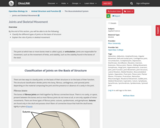
By the end of this section, you will be able to do the following:
Classify the different types of joints on the basis of structure
Explain the role of joints in skeletal movement
- Subject:
- Applied Science
- Material Type:
- Module
- Date Added:
- 09/21/2018

By the end of this section, you will be able to do the following:
Classify the different types of joints on the basis of structure
Explain the role of joints in skeletal movement
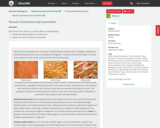
By the end of this section, you will be able to do the following:
Classify the different types of muscle tissue
Explain the role of muscles in locomotion

By the end of this section, you will be able to do the following:
Discuss the different types of skeletal systems
Explain the role of the human skeletal system
Compare and contrast different skeletal systems

By the end of this section, you will be able to do the following:
Describe the basis of the resting membrane potential
Explain the stages of an action potential and how action potentials are propagated
Explain the similarities and differences between chemical and electrical synapses
Describe long-term potentiation and long-term depression

By the end of this section, you will be able to do the following:
Describe the symptoms, potential causes, and treatment of several examples of nervous system disorders
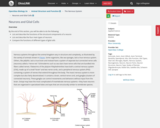
By the end of this section, you will be able to do the following:
List and describe the functions of the structural components of a neuron
List and describe the four main types of neurons
Compare the functions of different types of glial cells
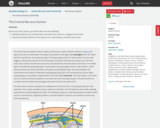
By the end of this section, you will be able to do the following:
Identify the spinal cord, cerebral lobes, and other brain areas on a diagram of the brain
Describe the basic functions of the spinal cord, cerebral lobes, and other brain areas
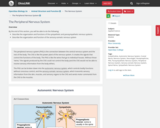
By the end of this section, you will be able to do the following:
Describe the organization and functions of the sympathetic and parasympathetic nervous systems
Describe the organization and function of the sensory-somatic nervous system
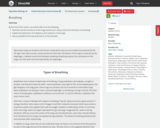
By the end of this section, you will be able to do the following:
Describe how the structures of the lungs and thoracic cavity control the mechanics of breathing
Explain the importance of compliance and resistance in the lungs
Discuss problems that may arise due to a V/Q mismatch

By the end of this section, you will be able to do the following:
Name and describe lung volumes and capacities
Understand how gas pressure influences how gases move into and out of the body

By the end of this section, you will be able to do the following:
Describe the passage of air from the outside environment to the lungs
Explain how the lungs are protected from particulate matter
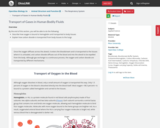
By the end of this section, you will be able to do the following:
Describe how oxygen is bound to hemoglobin and transported to body tissues
Explain how carbon dioxide is transported from body tissues to the lungs


By the end of this section, you will be able to do the following:
List the characteristics of fungi
Describe the composition of the mycelium
Describe the mode of nutrition of fungi
Explain sexual and asexual reproduction in fungi
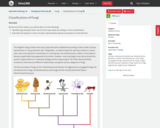
By the end of this section, you will be able to do the following:
Identify fungi and place them into the five major phyla according to current classification
Describe each phylum in terms of major representative species and patterns of reproduction

By the end of this section, you will be able to do the following:
Describe the role of fungi in various ecosystems
Describe mutualistic relationships of fungi with plant roots and photosynthetic organisms
Describe the beneficial relationship between some fungi and insects

By the end of this section, you will be able to do the following:
Describe some fungal parasites and pathogens of plants
Describe the different types of fungal infections in humans
Explain why antifungal therapy is hampered by the similarity between fungal and animal cells

By the end of this section, you will be able to do the following:
Describe the importance of fungi to the balance of the environment
Summarize the role of fungi in agriculture and food and beverage preparation
Describe the importance of fungi in the chemical and pharmaceutical industries
Discuss the role of fungi as model organisms